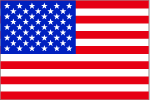Esophageal Protection
Proactive cooling during radiofrequency (RF) cardiac ablation*
The ensoETM® system has been shown to reduce the risk of thermal injury through proactive cooling during RF cardiac ablation,1 as well as demonstrating a reduction in mean procedure time,3,4 increased mean lab throughput,5 and a 14% absolute increase in freedom from atrial arrhythmia at one year.6 Additionally, a real world retrospective study of 25,186 patients showed a statistically significant reduction in atrioesophageal fistula (AEF) from 0.146% with LET monitoring to 0% after adoption of the ensoETM® system.2

.png?as=0&w=600&hash=A73747C9FFEC45C052236ACE9265841E)
ensoETM®
FDA-granted indication to reduce the likelihood of ablation-related esophageal injury resulting from RF cardiac ablation procedures.1
Akin to a standard orogastric tube circulating chilled water, the ensoETM® system has been shown to reduce the risk of thermal injury through proactive cooling during RF cardiac ablation.1
1. ensoETM IFU ECD-027 for model ECD01-A and IFU ECD-047 for model ECD02-A.
2. Sanchez, J, Woods, C, Zagrodzky, J. et al. Atrioesophageal Fistula Rates Before and After Adoption of Active Esophageal Cooling During Atrial Fibrillation Ablation. J Am Coll Cardiol EP. 2023 Dec, 9 (12)2558–2570. DOI: https://doi.org/10.1016/j.jacep.2023.08.022 .
3. Joseph C, et al. Impact of active esophageal cooling on catheter ablation procedure times across five healthcare systems. Euro Heart J 2023;44 (Suppl 2).
4. Joseph C, et al. Procedural time reduction associated with active esophageal cooling during pulmonary vein isolation. J Interv Card Electophysiol 2022; (65):617-622. https://doi.org/10.1007/s10840-022-01204-1.7.
5. Zagrodzky W, Cooper J, Joseph C, et al. Association between proactive esophageal cooling and increased lab throughput. J Cardiovasc Electrophysiol. 2024; 1-6. doi: https://doi.org/10.1111/jce.16263.
6. Joseph, C., Nazari, J., Zagrodzky, J. et al. Improved 1-year outcomes after active cooling during left atrial radiofrequency ablation. J Interv Card Electrophysiol 66, 1621–1629 (2023). https://doi.org/10.1007/s10840-023-01474-3.
 言語の選択
言語の選択  English (United States)
English (United States)  English (Canada)
English (Canada)  English (Other Regions)
English (Other Regions)  French
French  German
German  Italian
Italian  Russian
Russian  Spanish
Spanish  Chinese
Chinese 
